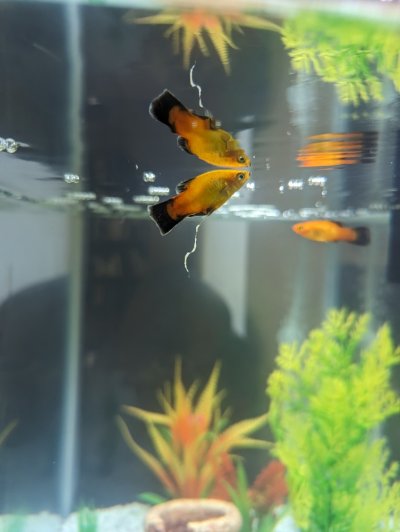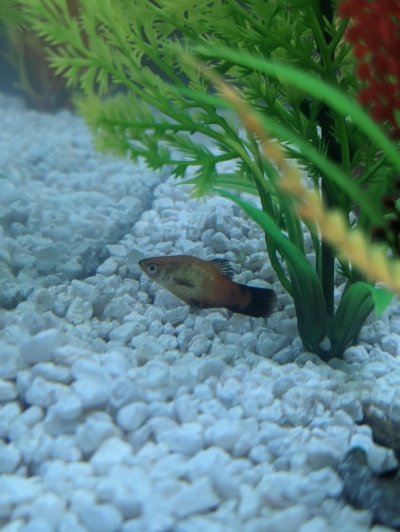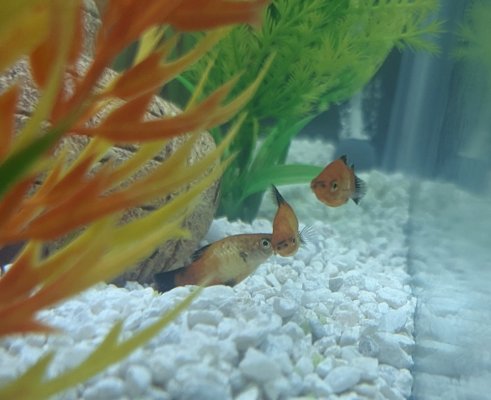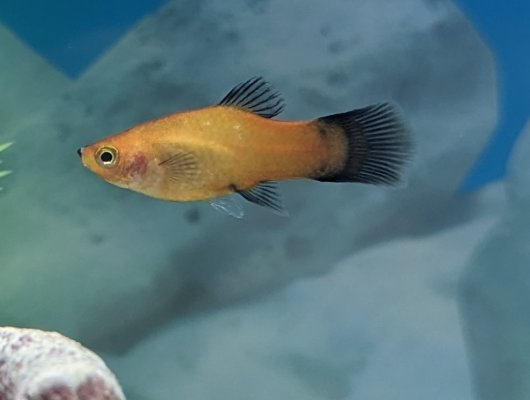A follow-up to yesterday's posts.
First of all, thanks to all who responded yesterday.
To summarize the situation:
I've had three platys since Sunday, in an uncycled tank (tank had been running for about 10 days before adding fish). Trying to use them for a "fish-in" cycle for various reasons.
I've been keeping a careful eye on the water parameters, measuring at least once/day. Parameters have been generally steady, and tank doesn't really look like it's cycling yet.
Ammonia - right around 0.25 but who knows how accurate that is
Nitrites = 0
Nitrates =0
pH ~ 7.8
Temp = 25.0 Celsius
I had been adding Stability daily since I setup the tank (I understand that it might not be doing anything) but stopped yesterday. Been dosing with Prime regularly as well.
The tank has a HOB Aqueon 10 filter with improved filter media. Outlet is about 0.5 cm above the water surface, providing pretty good surface agitation. I also have a small air stone in the corner. Plenty of bubbles throughout the tank.
The issue is as follows. Of the three, the two ladies appear to be doing OK but the male is having some issues.
As noted in yesterday's post, he's had this very long white stringy poop hanging from him for awhile (it actually fell off last night, but it looks like another one is starting to come out) and he's also been hanging around the surface (gasping?) quite a bit. I'd say he's been spending most of his time at the surface.
I tried feeding them yesterday (more than 24 hours after bringing them home) ... the two females looked like they were eating but the male wasn't so interested, although I do think he ate if something fell/floated right next to him.
Should I be concerned about him? If so, what should I do? Would a water change be of any benefit or better to wait for ammonia to rise a bit to get the cycle started first?
Thanks!
First of all, thanks to all who responded yesterday.
To summarize the situation:
I've had three platys since Sunday, in an uncycled tank (tank had been running for about 10 days before adding fish). Trying to use them for a "fish-in" cycle for various reasons.
I've been keeping a careful eye on the water parameters, measuring at least once/day. Parameters have been generally steady, and tank doesn't really look like it's cycling yet.
Ammonia - right around 0.25 but who knows how accurate that is
Nitrites = 0
Nitrates =0
pH ~ 7.8
Temp = 25.0 Celsius
I had been adding Stability daily since I setup the tank (I understand that it might not be doing anything) but stopped yesterday. Been dosing with Prime regularly as well.
The tank has a HOB Aqueon 10 filter with improved filter media. Outlet is about 0.5 cm above the water surface, providing pretty good surface agitation. I also have a small air stone in the corner. Plenty of bubbles throughout the tank.
The issue is as follows. Of the three, the two ladies appear to be doing OK but the male is having some issues.
As noted in yesterday's post, he's had this very long white stringy poop hanging from him for awhile (it actually fell off last night, but it looks like another one is starting to come out) and he's also been hanging around the surface (gasping?) quite a bit. I'd say he's been spending most of his time at the surface.
I tried feeding them yesterday (more than 24 hours after bringing them home) ... the two females looked like they were eating but the male wasn't so interested, although I do think he ate if something fell/floated right next to him.
Should I be concerned about him? If so, what should I do? Would a water change be of any benefit or better to wait for ammonia to rise a bit to get the cycle started first?
Thanks!




